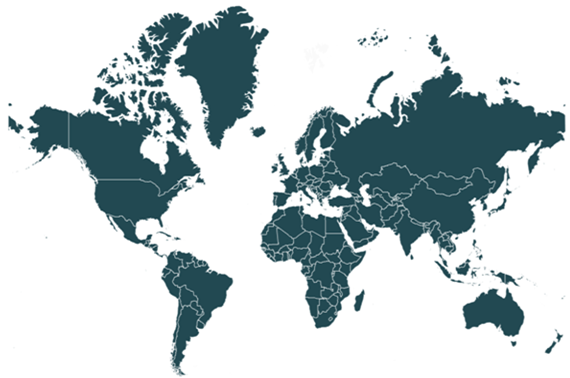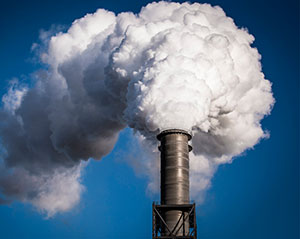Global Energy Outlook
Global Energy Outlook (EnerOutlook)은 무료 온라인 대화형 데이터 소프트웨어로서 직관적인 지도와 그래프를 통해 데이터를 검색하고 에너지 업계의 장기적인 추세를 시각적으로 분석 할 수 있습니다.
이 모든 것들은 전세계적으로 그리고 세계 지역별로 볼 수 있습니다. 이 인터페이스는 화석 연료 가격, 재생 에너지, 이산화탄소 배출에 관한 정보뿐만 아니라 에너지 공급과 수요에 대한 예측치를 제공합니다.
이 애플리케이션은 전체 EnerFuture 글로벌 예측 서비스에서 발췌한 것입니다. POLES 모델을 기반으로 합니다.
EnerFuture에서는 세 가지 글로벌 에너지 및 기후 시나리오를 고려합니다.
- EnerBase: 에너지 소비 및 관련 배출량의 역사적 추세가 2050년까지 유지되는 일상적인 시나리오입니다.
- EnerBlue: NDC(Nationally Defined Contributions)의 성공적인 달성을 기반으로 하는 시나리오.
- EnerGreen: 2100년까지 지구 온도 상승을 2°C 미만으로 제한할 수 있는 야심찬 시나리오.
예측 액세스:
- 전기 및 재생 에너지에 대한 세부 정보와 함께 총 1차 및 최종 소비량;
- CO2 배출량;
- 에너지 및 기후 지표;
- 7개의 지역으로 나눠 전 세계에 적용;
- 샘플 국가(브라질, 캐나다, 헝가리, 터키 및 베트남)의 스냅샷 전용 탭이 있습니다.
- 2050년까지의 데이터를 포함합니다.
- EnerBlue 시나리오의 자세한 결과와 EnerBase 및 EnerGreen 시나리오의 주요 수치.
고급 분석을 위한 자유로운 *xls 파일 내보내기.

Our forecasting experts just released the 2024 edition of our 2050 Global Energy & Climate scenarios.
More information21
Jun
The government of Côte d’Ivoire plans a more than three-fold increase in oil production in the country by 2027, as output is expected to grow from around 60 kb/d to about 200 kb/d by 2027. Hydrocarbon production will be boosted by recent oil and gas discoveries at the Côte d’Ivoire’s Baleine and Calao offshore fields. The government also expects more than US$15bn to be invested in the country's oil sector in the coming years.
13
Jun
The US Energy Information Administration (EIA) has published its June edition of its Short-Term Energy Outlook, in which it expects US oil output to grow by 2% to 13.2 mb/d in 2024, about 40,000 bbl/d higher than its previous forecast in May, and by another 4% in 2025 to 13.7 mb/d. Global consumption of liquid fuels is expected to increase by 1.1 mb/d in 2024 and 1.5 mb/d in 2025, with most of it being from non-OECD countries. The report changes its previous report of May 2024 regarding global oil output due to the OPEC+ producer group plans to raise output from the fourth quarter onwards. According to the report, the EIA expects a decline in global oil inventories through the first quarter of 2025 and put upward pressure on oil prices. The US marketed natural gas production to fall by 1% in 2024 because of low natural gas prices, while production is expected to grow by 2% in 2025 as natural gas prices rise.
02
May
The Philippines’ Department of Energy (DOE) expects that nearly 4.2 GW of new power projects to be commissioned in 2024, mixing renewables and conventional sources. This includes the start of commercial operation of a record solar power capacity of nearly 2 GW (1,985 MW) that should be commissioned in 2024, and two large thermal power plants, namely the 1,320 MW (4x440 MW) Batangas CCGT power project and the 600 MW (4x150 MW) Mariveles coal-fired power project (unit 1 already operational and 3 other units under testing and commissioning). In addition, at least 590 MW of battery energy storage should be commissioned during the year.
30
Apr
The Russian Ministry of Economic Development has confirmed the official forecasts for gas production in Russia for the 2024-2027 period. Gas production in the country should reach 666.7 bcm in 2024, 695.4 bcm in 2025, 707.5 bcm in 2026 and 727.3 bcm in 2027. The ministry has also unveiled a conservative forecast alongside the baseline one, with production reaching 654 bcm in 2024 and potentially standing at 659 bcm for 2025, 666 bcm in 2026 and 671 bcm for 2027.




